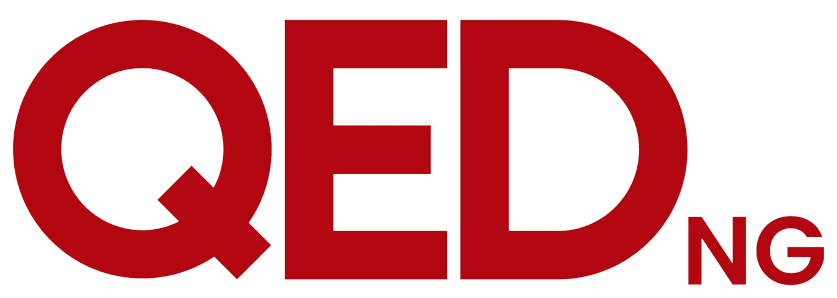By Onyema Dike
The Ministry of Humanitarian Affairs, Disaster Management and Social Development was created on August 21, 2019 with a clear mandate to develop humanitarian policies and provide effective coordination of national and international humanitarian interventions; ensure strategic disaster mitigation, preparedness, and response; and manage the formulation and implementation of fair focused social inclusion and protection programs in Nigeria.
In line with that mandate, it assumed the role of midwife of the social investment and protection programmes of the President Muhammadu Buhari administration as encapsulated under the National Social Protection Policy (NSPP).
The Federal Government of Nigeria established the National Social Investment Programme (NSIP) in 2016 to tackle poverty and hunger across the country. The suite of programmes under the NSIP include the N-Power scheme, Conditional Cash Transfer (CCT) programme, Government Enterprise and Empowerment Programme (GEEP) and the Home-Grown School Feeding Programme (HGSF).
Launched in 2016, N-Power has impacted 500,000 beneficiaries made up of 200,000 from Batch A which started in September 2016 and 300,000 from Batch B which kicked off in August 2018. The beneficiaries were spread across the key industries targeted by the programme – agriculture, health, education and tax.
N-Power is the most popular of the NSIPs on account of the fact that the beneficiaries are young and internet savvy and as such are quick to resort to social media to share their views and grievances where they arise.
The N-Power programme is also, without doubt, the most problematic. It was designed to assist young Nigerians between the ages of 18 to 35 acquire and develop life-long skills for entrepreneurship or employability. Beneficiaries of the programme are to receive a N30,000 monthly stipend.
The problem arose mostly from delays in payment of stipends following migration to a new payment platform and then a lack of clearly defined exit strategy which had the damaging effect of extending beneficiaries stay on the programme beyond the advertised 24 months as the programme coordinators rallied to come up with a seamless transition and exit strategy.
There was, therefore, huge uproar when the ministry of humanitarian affairs announced on June 19, 2020 that Batch A and B beneficiaries would be transitioned on June 30 and July 31, 2020 respectively.
The decibel level was heightened by the further announcement that the application portal for Batch C enrolment would open on Friday, June 26, 2020 thus marking an end to Batch A and B.
The very vocal and internet savvy Batch A and B beneficiaries refused to accept the impending exit even though they had all spent more than the advertised 24 months. They wanted their outstanding stipends paid and a clear exit strategy announced. Many of them recalled that they had been promised an exit loan that would help them set up businesses and become entrepreneurs.
The ministry and the minister have, understandably, been targets of vicious attacks on social media since that announcement in June but last week oil seemed to have been poured on troubled waters when the ministry announced that it had set up the N-Power Exit (NEXIT) portal in collaboration with the Central Bank of Nigeria (CBN) to enable exited N-Power beneficiaries log on to and apply for the various economic, empowerment and entrepreneurship options provided by the CBN.
To access the options, exited beneficiaries must provide the required information for placements into CBN’s intervention options. The NEXIT portal will determine the suitability of applicants and access would be granted upon meeting the criteria and conditions set by the CBN.
The announcement of the launch of the NEXIT portal does not just signpost a fitting finale to the drawn-out transition and exit process for Batch A and B, it has implications for the economy.
When the Buhari administration took office in 2015, it presented what was regarded as a very ambitious vision of taking 100 million Nigerians out of poverty in 10 years. The NSIPs were critical to actualising that vision.
In June 2020, minister of humanitarian affairs, disaster management and social development Sadiya Umar Farouq announced that 109, 829 beneficiaries from Batch A and B had become entrepreneurs who are running small but thriving businesses in their communities. That number did not take into account N-Power beneficiaries who had taken advantage of the upskilling programmes to gain employment after passing entrance exams and psychometric tests set by companies.
Viewed from that perspective, it is obvious that the federal government through the N-Power programme is bridging the unemployment gap and empowering young Nigerians to become entrepreneurs and employers of labour.
The corollary is important to help underline the significance because while SMEs may be small, development experts recognise them as the engine rooms of growth for most developing and even developed economies. In Nigeria, extant statistics indicate that SMEs contribute 48% of the national GDP.
With the NEXIT option by the CBN and ministry of humanitarian affairs providing a seamless transition for Batch A and B beneficiaries, the country will be better for it as the economy will be getting that much needed shot in the arm post-Covid-19.
- Dike, a public analyst, writes from Lagos


